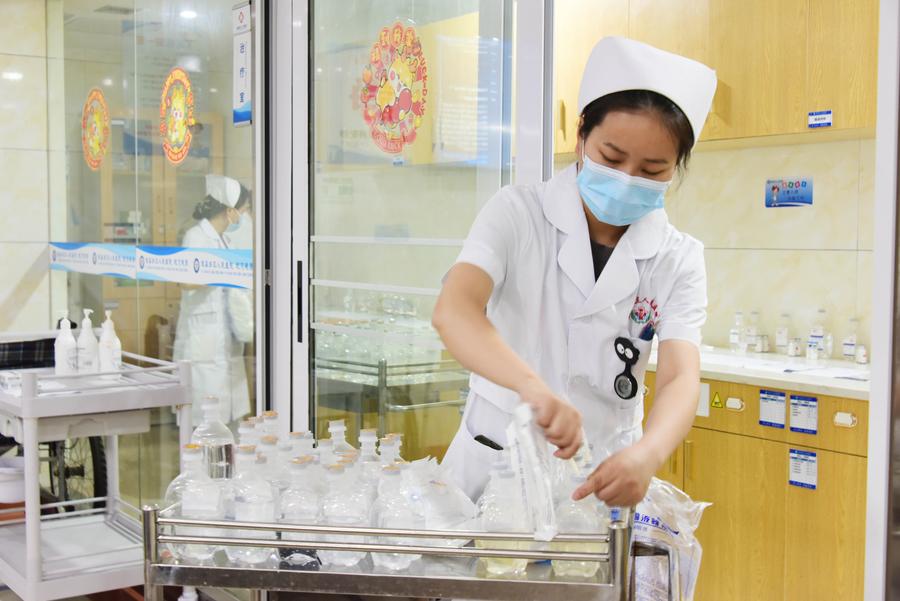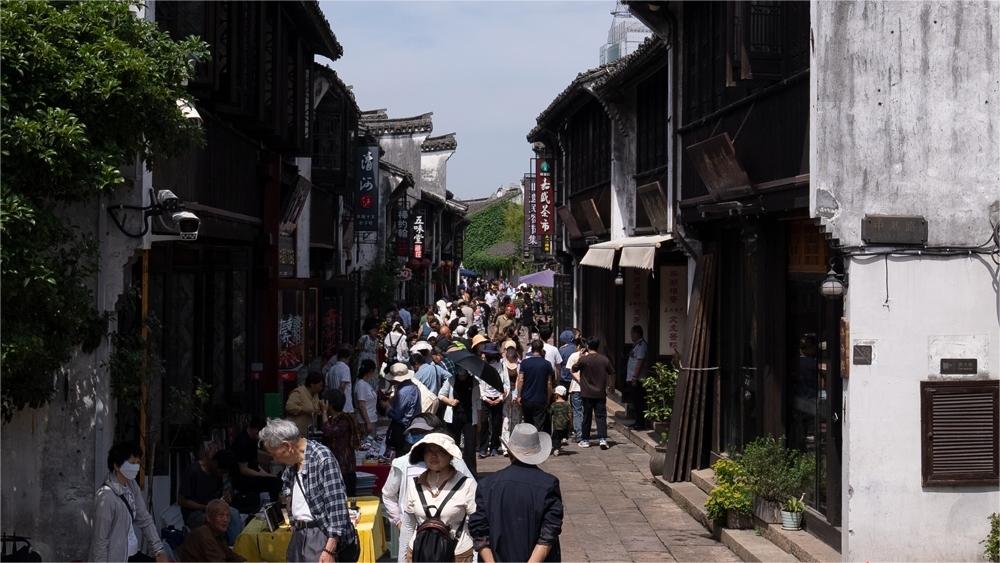China expands health insurance coverage of fertility treatment to improve birth rate

A nurse prepares medicine for patients at the inpatient department of a hospital in Changde, central China's Hunan Province, May 12, 2024. (Photo by Bai Yipu/Xinhua)
BEIJING, May 31 (Xinhua) -- From June 1, Shanghai will include 12 types of assisted reproduction technology (ART) in basic health insurance to ease infertile couples' burden from the once expensive fertility treatments, in a move to raise the birth rate.
Besides Shanghai, the new policy will also take effect in the provinces of Qinghai, Zhejiang, and Jiangxi starting from next month. In the past year, six other provincial-level regions, including Beijing, have already included ART in basic health insurance.
The coverage of ART means basic health insurance will pay for at least 50 percent of the fertility treatment expense. In Shanghai, a whole cycle of in vitro fertilization (IVF) or intracytoplasmic sperm injection (ICSI) costs about 30,000 yuan (4,220 U.S. dollars), according to Chen Miaoxin, a senior fertility doctor at the Shanghai First Maternity and Infant Hospital.
The Shanghai Healthcare Security Bureau estimates that hospitals in the city receive 100,000 patient visits for ART each year, and the health insurance coverage of ART will save each patient about 9,000 yuan on the treatments on average.
Before ART was covered in basic health insurance, China's National Healthcare Security Administration (NHSA) issued a set of guidelines in June 2023 to intervene in fertility treatment pricing. According to the guidelines, hospitals need to provide ART at guidance prices or at prices not higher than the government's price limitation.
The reduction of ART expenses is aimed at expanding access to treatments for a growing number of infertility couples with fertility desire, as the country is facing a declining birth rate, especially in large cities.
Sun Yun, vice president of Shanghai-based Renji Hospital and director of the hospital's reproductive medicine department, said China's infertility rate has risen from 2 percent in the 1950s to 18.5 percent, and currently, every one in eight couples of reproductive age needs ART.
In Beijing, where ART has been included in basic health insurance since July 2023, 32,000 patients had received ART by the end of March 2024. The total expense was 280 million yuan, among which 190 million yuan was paid by basic health insurance.
Xue Qing, director of the Center of Reproductive Medicine at the Peking University First Hospital, said the hospital saw a significant increase in patients undergoing egg retrieval after the new policy came into effect.
"The health insurance coverage (of ART) has lowered the threshold for patients to receive the treatments in terms of finance," Xue said. "Some patients waited until ART is included in basic health insurance to undergo egg retrieval."
In recent years, China has also added several types of fertility medication, such as ovulation-inducing drugs, to its national reimbursement drug list.
In July 2022, 17 authorities, including the NHSA and the National Health Commission, jointly issued a set of guidelines, calling for local governments to gradually include appropriate labor pain management methods in health insurance.
Shanghai began including labor analgesia in basic health insurance in January 2022. Since then, the city's health insurance funds have paid nearly 100 million yuan to approximately 70,000 people.
The NHSA said it will establish a set of national standards regarding the reimbursement of ART and encourage more provincial-level regions to include ART in basic health insurance.
Photos
Related Stories
- NE China city offers support to boost birth rate
- Health insurance reform to better meet needs of patients: NHSA
- 17 Chinese govt departments issue guideline to boost population growth amid falling birth rate
- Marriages fall in 2021 leading to lower birth rates in China, despite declining divorce rate
- China to improve health insurance for patients with serious illnesses
- Over 59 mln Chinese elderly covered with commercial health insurance
Copyright © 2024 People's Daily Online. All Rights Reserved.









